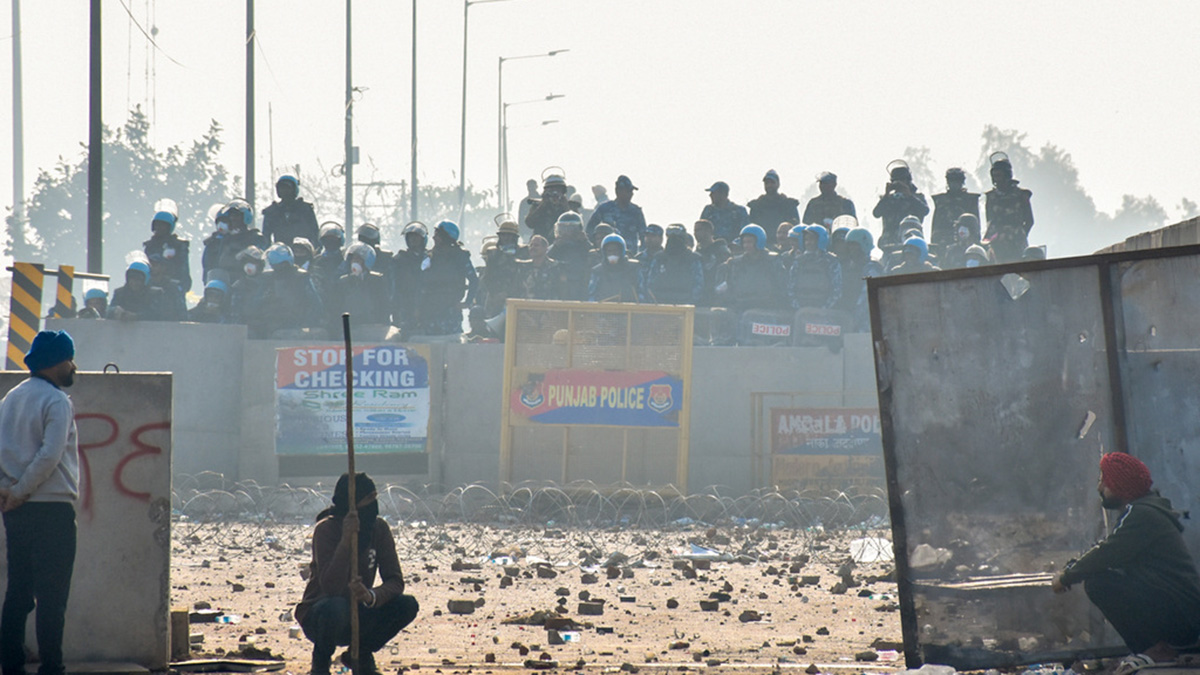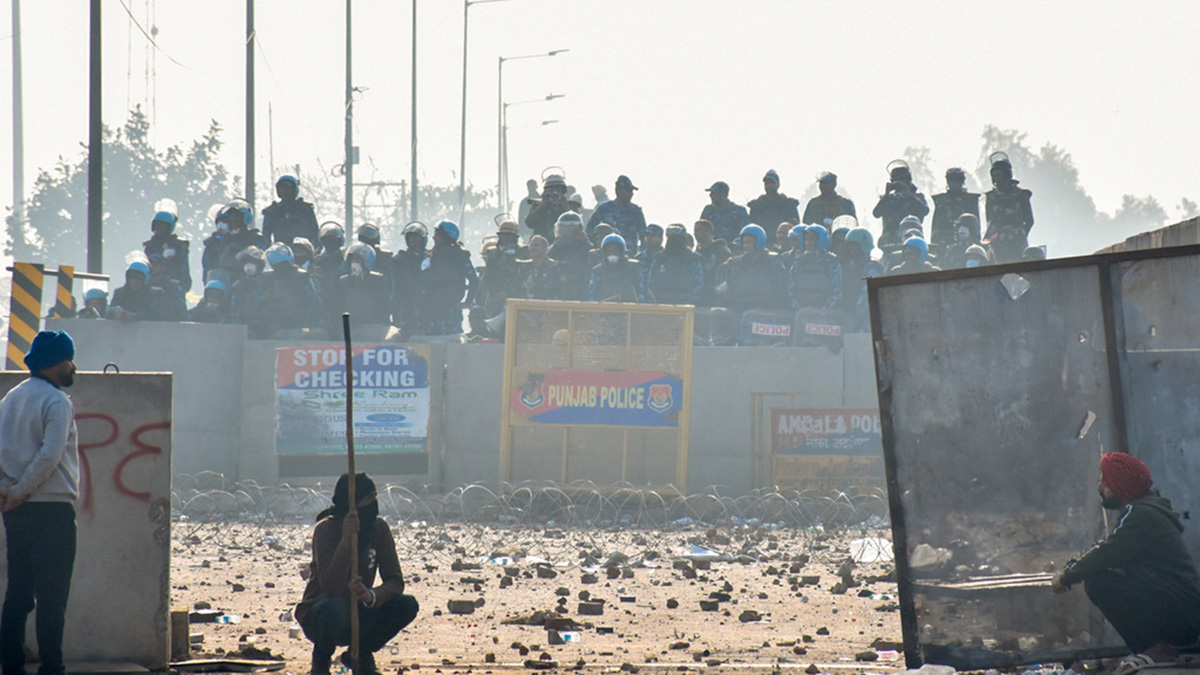In his brief intervention when the subject of the dramatic alleged suicide by Gajendra Singh to highlight the plight of distressed farmers taking their lives was being discussed in Parliament, Prime Minister Narendra Modi said, `we have to see where we were wrong, what wrong road we took’.
Perhaps he should start with doing a reality check on the many knee-jerk and emotional suggestions that his brethren across parties put forward. The ones that are getting top billing are working out a way to ease the debt burden of farmers and an immediate hike in minimum support prices (MSP) or procurement prices. The increase in MSP by this government has admittedly been muted and there is sound economic logic behind it, but sound economic logic does not get traction when emotions are running high. Apart from loan waivers and unthinking MSP increases having a negative impact on the economy, do they really work on the ground in terms of alleviating stress? Do they achieve anything more than individual parties scoring brownie points?
Higher MSPs and debt write-offs are the political language of protest; they may not necessarily be the right way of addressing the problem of agrarian distress, says Abhijit Sen, agricultural economist and former member Planning Commission. Remember Sen is no economic right-winger who, as the popular caricature goes, cares little for farmers and only bats for the corporate sector. He is firmly left of centre in the ideological divide.
At the Congress Party’s farmers’ rally last Sunday, a constant refrain in the Gandhi mother-son duet was the massive Rs 72,000 crore farm loan waiver of the United Progressive Alliance (UPA) in 2008. What has been glossed over is a rather damning report of the Comptroller and Auditor General (CAG). The report noted that 13.5 percent of accounts the CAG audited were eligible for waiver benefits but were denied these. Farmers whose names appeared in the list of beneficiaries were not given these benefits, even as Rs 20.5 crore was spent on waiving debts of non-eligible farmers, many of whom had taken loans for non-agricultural purposes. Debt waiver receipts were not issued to farmers. The monitoring of the scheme was inadequate, there were instances of tampering of records in 2824 cases with claims totalling Rs 8.6 crore.
But the problem of debt waiver is not just one of discrepancies and mismanagement or worse. Firstly, the very idea is flawed. “They spoil the banking culture,” says Mahendra Dev, director of the Indira Gandhi Institute of Development Research (IGIDR). He too is no market fundamentalist.
Secondly, who exactly do these loan waivers benefit? The waivers are generally routed through the institutional channels – government, cooperatives and banks. The National Sample Survey Organisation’s (NSSO) report on Situation of Agricultural Households in India show that credit from these institutional channels were close to 80 percent for rural households with more than 10 hectares of land – the large farmers. Even for those which owned between 1 and 2 hectares of land (the small farmers, according to the State of Indian Agriculture 2012-13), 64 percent of credit came from institutional channels.
But for those who owned less than 1 hectare of land (the marginal farmers, who account for 67 per cent of farmers) these institutional sources provide only between 15 per cent and 50 per cent of lending. The bulk of credit is provided by money-lenders, relatives, traders and landlords, in that order. None of these non-formal channels come under any debt waiver programme, so there is no relief for their borrowers. These are the people who fall into bondage, work under inhuman conditions in brick kilns or construction sites. This inconvenient fact gets overlooked in all the political noise over rural indebtedness.
Does that mean the government should do nothing about rural indebtedness, especially in times of shock events as now? Certainly not. The distress that farmers are now facing is not exactly of their own making; it is a combination of god (unseasonal rain) and government (failure of successive governments to adopt sound agriculture policies). Sen favours an approach in which banks are empowered to reschedule loans or have one-time settlement of outstanding amounts as part of normal banking practice. “This will push back demands for debt waivers,” he says.
Take also the demand for hikes in MSP. The Congress has been boasting about the handsome MSP hikes during the UPA rule. There is the minor matter of how these hikes fuelled inflation, but are MSP hikes which go beyond the recommendations of the Commission for Agricultural Costs and Prices (CACP) sustainable, especially at a time when international prices are falling? Remember that the CACP bases its price recommendations on various factors like cost of production, demand and supply, domestic and international price trends, terms of trade between agriculture and non-agriculture and impact on consumers.
“Forget about whether it is sustainable, is it a solution at all?” asks Sudha Narayanan, associate professor at IGIDR. Higher MSP and procurement by the government are not a solution for risk mitigation, she argues. Eighty per cent of procurement, Narayanan points out, is in five states; the agricultural distress and farmers’ suicides are not a major issue there. Dev, a former CACP chairman, concurs, pointing out that MSP is limited to a few crops and a few states.
More importantly, situation of Agricultural Households in India shows that a majority of farmers are not aware of MSP or of the procurement agency to which they can sell their produce. Even in the case of paddy, one of the top two MSP crops along with wheat, only 32 percent of farmers were aware of the MSP, only 25 per cent knew of the procurement agency and only 13.5 per cent sold paddy to the agency. Moreover, the sale at MSP was only 27 percent of their total sales. It was only in the case of sugarcane and potato that the MSP sale was over 30 per cent of total sales. In many other crops, this share was in single digits. Yes, there were farmers who knew about MSP and the procurement agency but still did not sell to the agency, but the main reason they did this was the procurement agency did not have a local presence.
Sen, also a former CACP chairman, agrees that it is not enough to increase MSP. “You have to get the MSP system working on the ground.”
This does not mean that there should be no immediate relief for farmers in the current situation of crop losses. After all, this is a shock event. Immediate relief can take the form of cash compensation. The Modi government has been pro-active on this front – compensation will now kick in if even 33 per cent of crop is damaged, against 50 per cent earlier, procurement specifications have been relaxed and disaster response funds will also be deployed. This will not have a long term negative impact on the economy (apart from the fiscal stress). However, the government should not stop at merely announcing it. There has to be concerted follow up to see that the cash actually reaches the affected farmers. Narayanan recalls visiting some farmers around ten years after they had been promised compensation – they had not got the money.
Addressing this will mean fixing a system that is completely broken and has been left unattended for years. But then it is so much easier to put the government of the day on the mat, demand and get MSP increases, handsome compensation and loan waivers than to ensure that all this reaches those for whom it is meant. If it doesn’t then the government can always be blamed. And let’s be clear, if the BJP were not in power, it would do precisely what the Congress and other opposition parties are doing today.
In the long run, however, there is no way out than to risk-proof agriculture and farmers. The laundry list of what needs to be done is well known – creating a national agricultural market, massive investment in infrastructure as well as technology and research, setting right the skew in fertiliser subsidies.
But these are not sexy enough topics to stall Parliament or hold rallies for, are they?


)




)
)
)
)
)
)
)
)